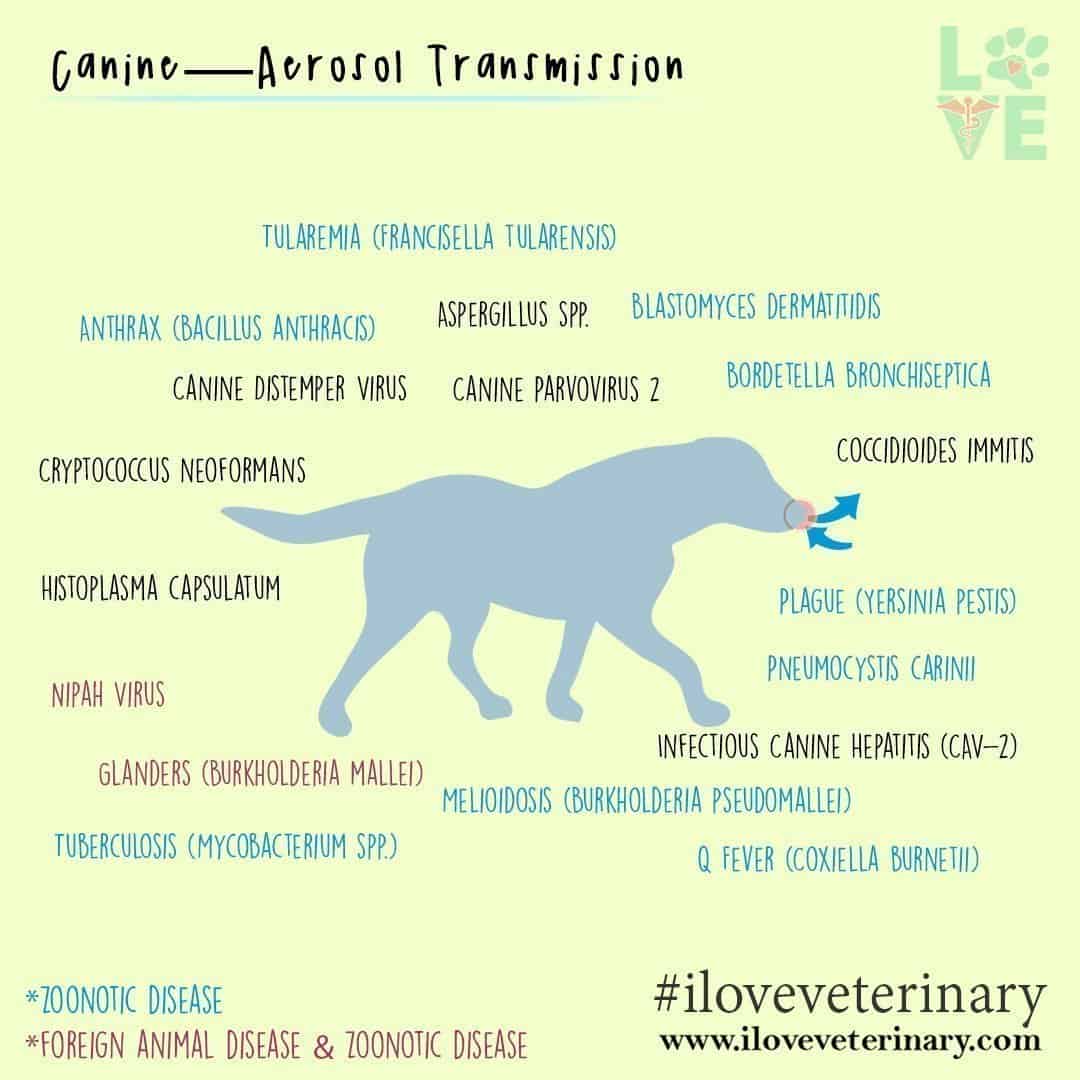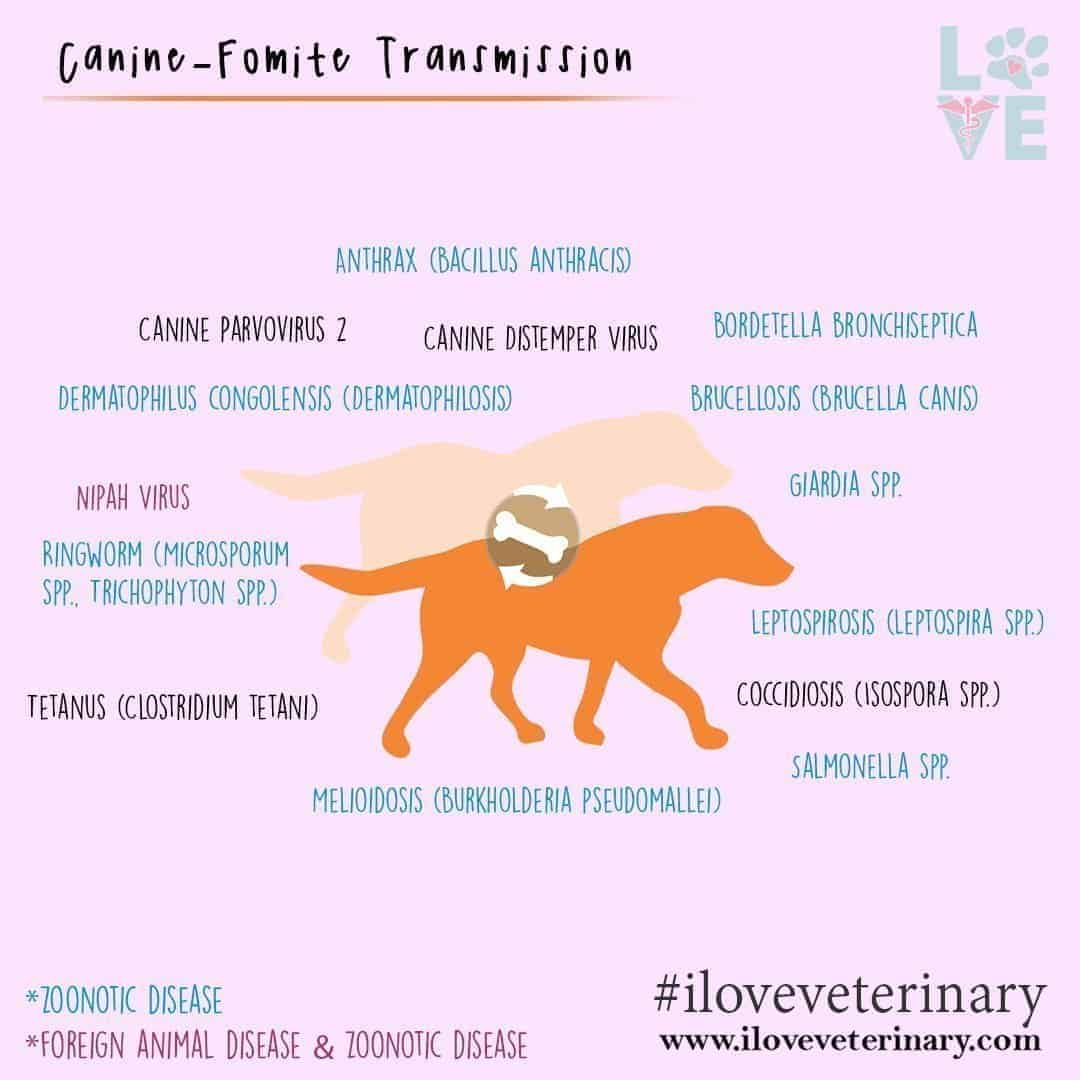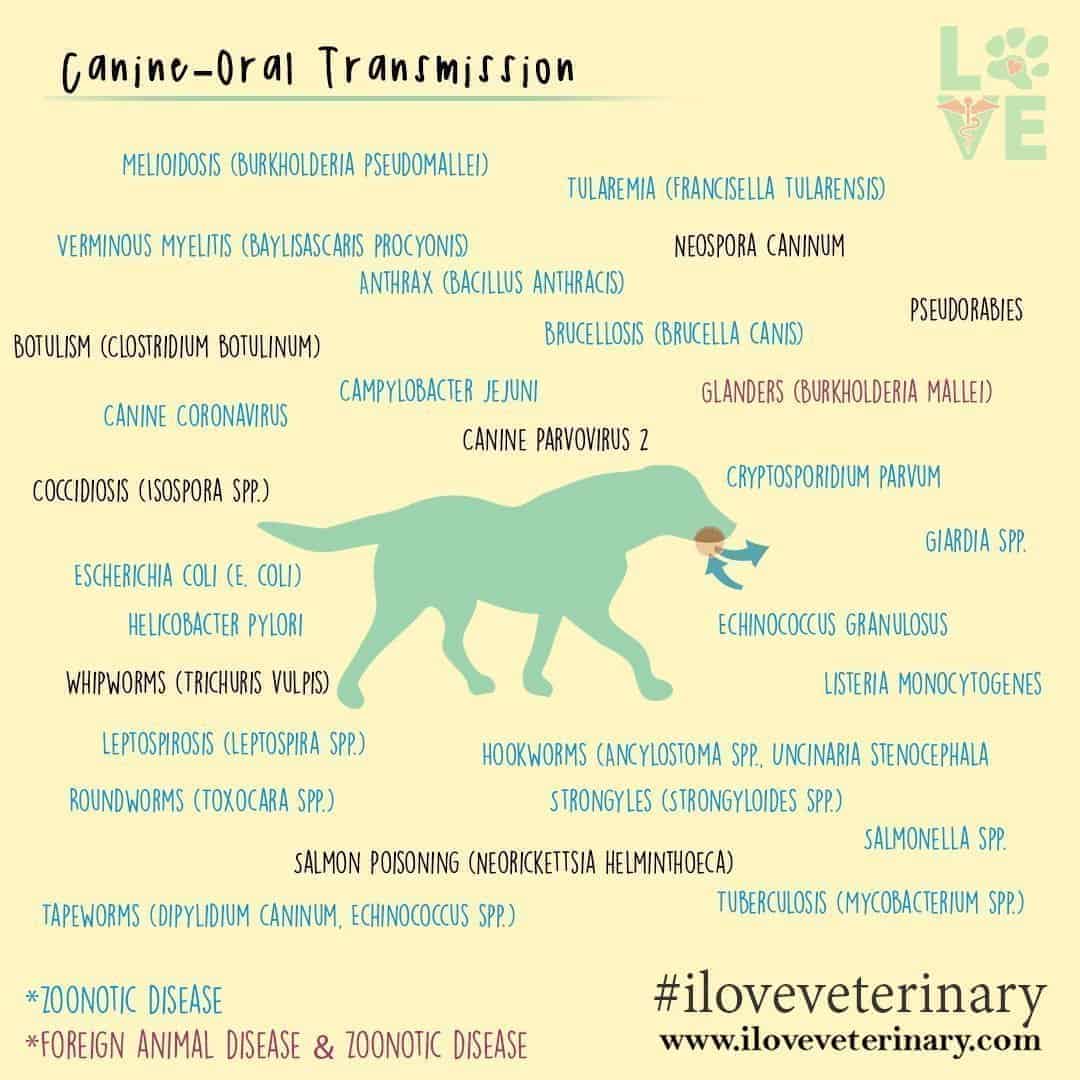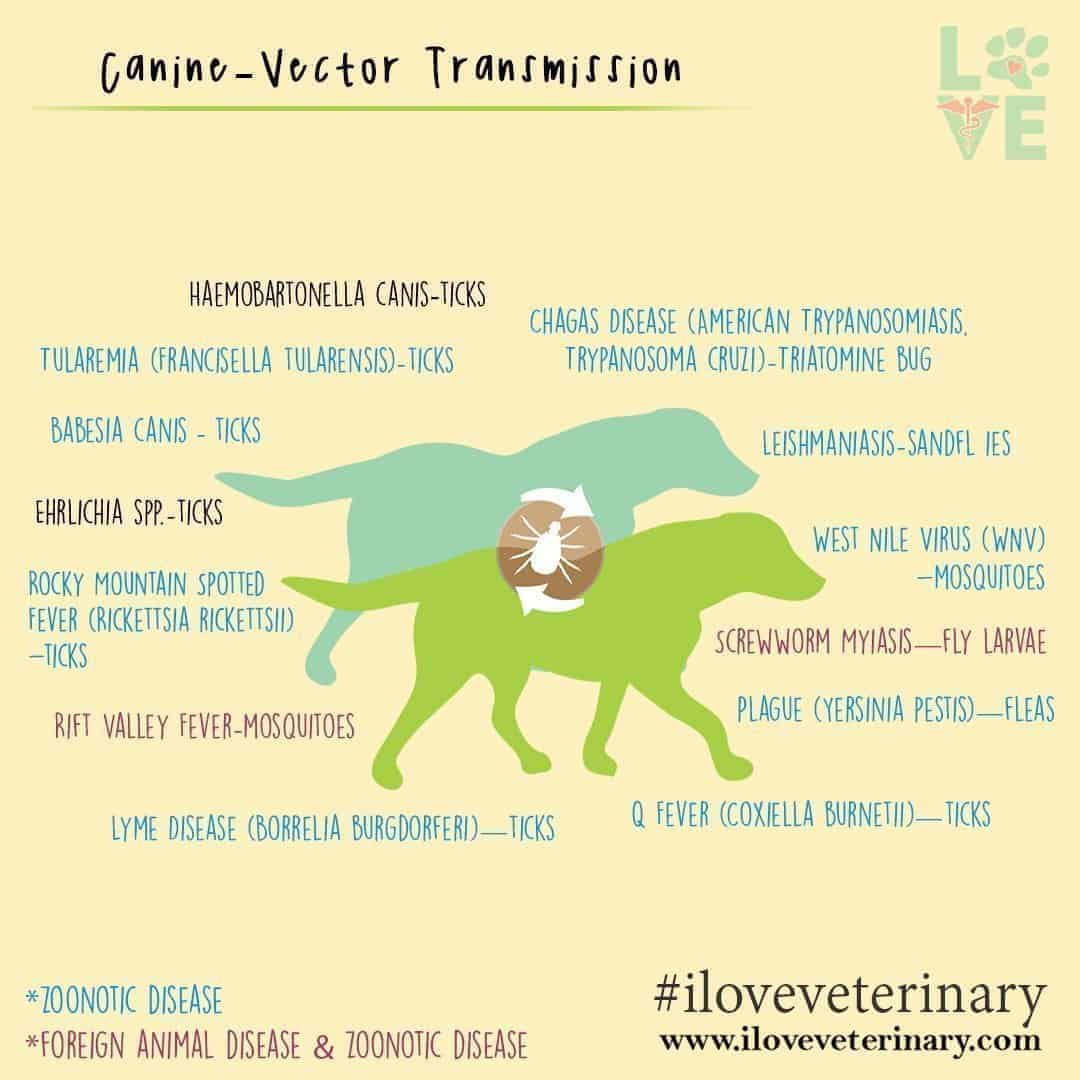When it comes to the transmission of canine diseases, in every case, prevention is the most important thing you can do!
In the case of vector transmissions, proper prevention against internal and external parasites is key. When it comes to oral transmission, vaccines can protect your dog against some of the diseases.
For the rest, early detection of symptoms and seeking veterinary care are critical. If your dog is sick at the moment, limit their contact with other dogs. And always watch your dog when it sniffs around weird spaces 🙂
In the illustrations below, you can find all the possible transmission routes for the most common canine diseases.
Canine Aerosol Transmitted Diseases
Dogs are known for spreading lice, ringworm, and canine herpes to humans. Some of these diseases are zoonoses, meaning that they can be transmitted from dogs to people. Other diseases spread between humans with little or no contact with the family pet.
Canine cough is a very contagious disease that spreads rapidly. Signs include open-mouthed facial expressions while breathing, fever, coughing, gagging, and watery eyes. Canine cough also causes runny noses.
The disease is caused by a virus that affects dogs of all ages. It may last up to three weeks if untreated. Dogs are treated with antibiotics for secondary infections. Hookworms are small parasites that infect dogs, cats, humans, and other animals.

Canine Diseases via Direct Contact Transmission
Canine direct contact transmission has been of concern among veterinarians for decades. The risk to the general public from direct canine contact is low, but when there is a bite or when vomit or feces from an infected animal comes in contact with a human’s mucus membranes, it becomes a possibility.
In the United States, canine rabies is rare. In 2004, there were 69 reported cases of rabies, most of which were dog-to-dog transmission. There have been no human deaths from rabies in the United States since 1949.
In 2006, there were 556 reported cases of rabies reported in the United States. In 2006, West Virginia was responsible for 53% of cases and 47 states had a positive rabies incidence report for that year.

Fomite Transmission in Canine Diseases
Forget about your dog’s fleas or ticks — recently, a single flea may have caused four fatal cases of fomite transmission in dogs in the United States.
Fomites are objects that can transmit diseases, such as roaches and bed bugs. They also include other parasites such as tapeworms and lice that can spread to people and other animals if they come into contact with the right objects. Fleas are known to carry the plague, tularemia, typhus, and other diseases.
Fleas can be quite hardy. They can live up to 100 days without feeding, which is how they survive harsh conditions. Fleas are also extremely mobile, with the ability to jump up to 200 times their body length. They attach themselves to animals for blood meals but also pick up various bacteria and viruses along the way.

Orally Transmitted Canine Diseases
If you are new to owning a dog, you may not be aware of some of these Canine Orally Transmitted Diseases (COTDs), which can pose risks to both your pet and your family. COTDs are spread when dogs lick each other’s faces, mouths, tongues, or fur in an attempt to socialize with another animal. From there, they can pass on the illness with little warning.
The best way to prevent COTDs is to make sure your dog’s nails and teeth are kept trimmed and clean. Also, make sure the dog you adopt has had all their vaccinations and dewormings and is up-to-date on their heartworm and flea/tick prevention (such as Frontline).
A thorough vaccination history can also help you identify any illnesses they may have been exposed to prior to becoming an owner. That being said, some diseases can be transmitted even though there isn’t a vaccination available.

Canine Diseases Via Vector Transmission
Vector-borne diseases are those that are transmitted from one species to another via the bite of an infected animal or insect. Vector-borne diseases can be either zoonotic (transmitted from animals to humans) or rodent-borne (transmitted from rats and mice to humans).
In the United States, sharpshooters have been hired to eliminate all wood rats in order to interrupt transmission of Leishmania among fruit bats.
Infection is endemic where the vector population exists and epidemic when introduced into areas lacking immune individuals. The vector can be a rodent, insect, or domestic animal.
The common dog tick, the Dermacentor variabilis, sometimes transmits Rocky Mountain spotted fever from other dogs to humans in the Rocky Mountain area of the United States and Canada, although it is more likely that bites from other ticks and deerflies transmit this disease.

